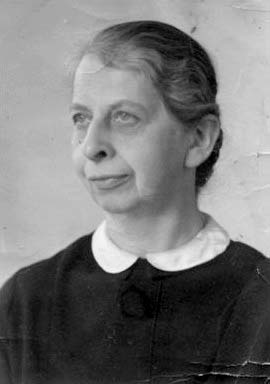Search for Names, Places and Biographies
Already layed Stumbling Stones
Suche
Amalie Levy (née Jastrow) * 1880
Heinrich-Barth-Straße 21 (Eimsbüttel, Rotherbaum)
HIER WOHNTE
AMALIE LEVY
GEB. JASTROW
JG. 1880
DEPORTIERT 1942
AUSCHWITZ
ERMORDET
further stumbling stones in Heinrich-Barth-Straße 21:
Hedwig Eisemann, Jenny Jastrow, Felix Levy, Gerda Link
Felix Levy, born 10/9/1874 in Hamburg, deported to Auschwitz on 7/11/1942, murdered there
Amalie Levy, née Jastrow, born 2/6/1880 in Hamburg, deported to Auschwitz on 7/11/1942, murdered there
Heinrich-Barth-Strasse 21
Felix Levy was born on October 9th, 1874 as the son of Baruch Levy, a Jewish physician, and his wife Frommaid Franziska, née Levisohn, into an extremely wealthy Jewish family. Felix’ wife Amalie, born on February 6th, 1880, also in Hamburg, was the daughter of Joseph and Jenny Jastrow.
The Levys had three daughters: Ruth, born August 31st, 1909, Gerda, born December 16th, 1911, and Hanna, born quite a few years later than her sisters, on July 2nd, 1920.
Felix, an industrialist and shareholder of the company "Albrecht & Schmidt Zigarren", was involved with the Henry Jones Masonic lodge, a lodge with exclusively Jewish members that was an influential congregation among the Jewish population of Hamburg and developed numerous activities to establish a secular German-Jewish identity. Before moving to Heinrich-Barth-Strasse, the Levy family had lived in a five and a half room apartment on the third floor of Schlüterstrasse 6. Hanna Levy later described her parents as not very religious; for her mother, she even used the term "anti-religious”. Her father, however, like many other Jews, found back to religion under the Hitler regime and regularly attended the services at the synagogue.
Around 1936, Felix Levy was forced to give up his share in "Albrecht & Schmidt Zigarren” on account of the increasing discrimination of Jews in the German Reich. The family now had to constrain themselves financially, downsizing their accommodations more and more. The Levys moved from Heinrich-Barth-Strasse to Isestrasse, from there to Innocentiastrasse, on to Jungfrauenthal and then, finally, to the old folks’ home of the German-Israelitic Community in Sedanstrasse 23. From there, Felix and Amalie, now 66 and 62 years old, were deported from Hamburg to Auschwitz on July 11th, 1942.
Amalie’s mother, more than 80 years old, who had been living with her daughter’s family since 1930, was deported to the so-called old folks’ ghetto in Theresienstadt. According to his daughter Hanna, Felix was displeased because he and his wife were being deported to Auschwitz and not to Theresienstadt, to where mainly Jews over 65 years of age and "privileged” persons, e.g. mutilated veterans, "mongrel Jews” and Jews with "Aryan” relatives, were sent. Theresienstadt in Northern Bohemia was supposed to be in a more attractive region and enjoy a more favorable climate than Auschwitz. In fact, however, it turned out to be a mere transit station for the great majority of those who were deported there.
The note on Felix Levy’s culture tax card merely states: "Left on 07/11/1942 due to migration.” The Levys’ furniture was publicly auctioned on September 29th, 1942. After the war, they were declared dead effective May 8th, 1945.
Amalie’s two sisters emigrated to Palestine and New York. Thus, they were two of 10,000 to 12,000 Hamburg Jews who emigrated from their home town under the Nazi Regime. Amalie’s brother Joseph Jastrow, a bookseller, last lived in Berlin, from where he was "evacuated to an unknown destination” on June 2nd, 1942. He, too, was declared dead effective May 8th, 1945.
Amalie and Felix Levy’s eldest daughter Ruth in 1937 went to Kfar Jedidjah, now Israel. Gerda, the second eldest (cf. Gerda Link, née Levy), had lived in Bratislava, the capital of Slovakia, from where she was taken to Auschwitz and murdered together with her husband and their two children. Hanna, the Levys’ youngest daughter, had emigrated to the Netherlands. Fro there she was deported to Terezin. She survived. After liberation she went to Palestine. After the war, the two sisters had to fight for compensation in Germany for many years.
Translated by Peter Hubschmid
Kindly supported by the Hermann Reemtsma Stiftung, Hamburg.
Stand: September 2018
© Carlotta Martini
Quellen: 522-1 Jüdische Gemeinde, 992bKultussteuerkartei der Deutsch-Israelitischen Gemeinde zu Hamburg; StaHH 522-1_992, StaHH 214-1_441, StaHH 351-11_35090; StaHH 522-1_488; Das Bundesarchiv Koblenz: Gedenkbuch Opfer der Verfolgung der Juden unter der nationalsozialistischen Gewaltherrschaft in Deutschland 1933–1945, Bd.3, Koblenz 2006; Beate Meyer (Hrsg.): Die Verfolgung und Ermordung der Hamburger Juden 1933–1945. Geschichte. Zeugnis. Erinnerung. Hamburg 2006; Privatbesitz, Interview mit Hannah Flusser geb. Levy, geführt von Beate Meyer am 16.2.2001; Angaben von Alexandra Blöcker v. 9.8.2018.


